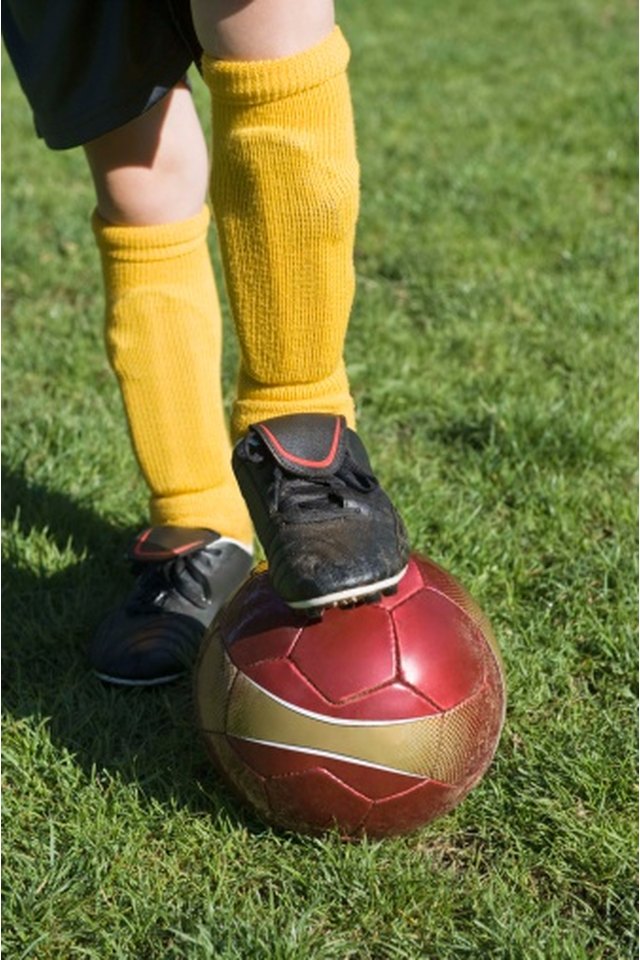The History of Sporting Equipment

Many sports require a ball, athletic shoes and other sports-specific equipment such as baseball bats, golf clubs or hockey sticks. Today, some athletes are connected to the type of equipment they use. For example, NHL star Sidney Crosby has almost become synonymous with Reebok Hockey gear since he entered the league in 2005. Crosby wears Reebok hockey skates, gloves and uses Reebok hockey sticks. As long as there have been sports, there has been specific equipment required to play them.
Ball Sports
Sports whose key piece of equipment is a ball include soccer and baseball. Soccer balls date back to ancient China in the Ts'in and Han dynasties, between 225 BC and 220 AD, according to SoccerBallWorld.com, and were made of animal skins. By 1855, Charles Goodyear created the world's first soccer balls made from vulcanized rubber. By the 1950s, the ball was made white in color to help fans see the ball with ease.
Before 1857, baseballs were made from a hard substance used as a core, with string wrapped around it. The cover was made from brown leather. In 1857, it was decided that baseballs were to have a regulation size, with a circumference between 10 and 10 1/4 inches, and a weight between 6 and 6 1/4 oz. In 1872, the rules were changed once again -- the ball's circumference was lowered one inch and the ball's weight was lessened by one oz. These are the same regulations in effect today.
Sticks, Clubs and Bats
Alexander Rutherford is credited with the creation of the first hockey stick, carved in 1852 near the town of Lindsay, Ontario. Sticks originally had flat blades but between 1957 and 1980, curved blades became more common.
Before the 16th century, golfers often made their own clubs themselves, usually out of wood. King James IV of England had William Mayne make a set of clubs for him, as Mayne's clubs were designed for longer shots, medium shots and shots close to the hole. This is the origin of the golf club set, according to the GolfClubRevue website. In the 1800s, it became easier to make iron clubs as they could be mass produced. Today golf clubs feature technologically advanced drivers, irons and putters.
Early baseball bats were quite heavy and had a thicker handle than the bats used today. In 1865, it was agreed upon that bats should be made from ash or hickory. Three years later, regulations were introduced that a bat could not exceed 42 inches in length. The bat's maximum thickness, 2 and 3/4 inches, was decided upon in 1895 and is still the rule in the MLB today.
Athletic Shoes
The proper footwear is required for effective balance and coordination in sports. 1925 saw a British company, an early incarnation of Reebok, develop a pair of spiked shoes. The shoes' creator felt that this new feature would make him a faster runner. Adidas later developed spiked shoes that could be worn for different running distances. By In the 1800s, the world's first pair of shoes featuring a rubber sole were created, and were called plimsolls. Converse released a performance basketball shoe in 1917, another first in shoe design. By 1985, NBA superstar Michael Jordan endorsed a new pair of Nike sneakers called Air Jordans.
Fun Facts
Original ice hockey gloves were not worn for protection from errant sticks and pucks but to protect players from the cold temperatures outdoors, according to the Dallas Stars website. In 1896, George Merritt wore the first form of goaltender leg pads in an ice hockey game, donning cricket pads to protect his legs. In this same era, football padding was minimal and consisted of cloth placed in the areas covering the shoulders, knees and thighs. Leather helmets were widely in use by World War I and plastic helmets became popular after the mid 1940s.
References
Resources
Writer Bio
Wade Harle began writing professionally in 2011 and holds a bachelor's degree in journalism from Iowa State University. His work on sports and other topics has been published on various websites.
